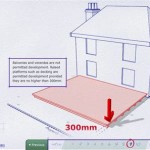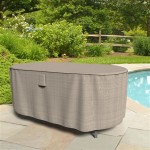How to Repair Plastic Wicker Patio Chairs
Plastic wicker patio chairs offer a blend of durability, weather resistance, and aesthetic appeal, making them a common choice for outdoor furniture. However, despite their robust nature, these chairs are susceptible to damage from prolonged exposure to the elements, heavy use, or accidental impact. Cracks, breaks, and unraveling strands are common issues that can detract from the chair's appearance and structural integrity. Fortunately, many of these problems can be effectively addressed with readily available tools and materials, extending the life and usability of the furniture.
The success of any repair hinges on a clear understanding of the damage, the type of plastic used in the wicker, and the appropriate repair techniques. Careful evaluation and preparation are crucial first steps. This article will outline a comprehensive guide to repairing plastic wicker patio chairs, encompassing assessment, cleaning, material selection, and various repair methods.
Assessing the Damage
Before commencing any repair, it is crucial to thoroughly assess the extent and nature of the damage. This assessment will dictate the necessary tools, materials, and repair techniques. Examine the chair closely, paying attention to the following:
Location of Damage: Determine exactly where the damage is located. Is it on the seat, backrest, frame, or armrests? The location will influence the accessibility and the type of stress the repaired area will be subjected to.
Type of Damage: Identify the specific type of damage. Common issues include:
- Cracks: Superficial or deep fissures in the plastic wicker.
- Breaks: Complete separation of the wicker strands.
- Unraveling: Loose or frayed wicker strands that have come undone from the weave.
- Sagging: Loss of tension in the wicker weave, typically in the seat.
- Frame Damage: Damage to the underlying metal or plastic frame that supports the wicker.
Extent of Damage: Evaluate how widespread the damage is. Is it a small, isolated crack, or is it a significant portion of the wicker that is damaged? The extent of the damage will determine the complexity and time required for the repair.
Material of Wicker: Identifying the type of plastic used in the wicker is essential for selecting the appropriate adhesives and repair materials. Common types include polyethylene, polypropylene, and PVC. The chair’s documentation or markings on the chair itself may provide this information. If the material is unknown, a small, inconspicuous test area can be used to assess the suitability of different adhesives.
Preparing for the Repair
Proper preparation is essential for ensuring a strong and lasting repair. The following steps should be taken before beginning the actual repair process:
Cleaning the Damaged Area: Remove all dirt, debris, and loose fragments from the damaged area. Use a brush, vacuum cleaner, or compressed air to clear away any particles that could interfere with the adhesion of repair materials. Wash the area with soap and water, and allow it to dry completely. For stubborn dirt or grime, a mild degreaser may be used. Ensure the degreaser is compatible with the type of plastic used in the wicker. Rinse thoroughly and allow to dry.
Gathering Necessary Tools and Materials: Assemble all the tools and materials required for the specific repair technique you intend to use. This may include:
- Plastic welder (for melting and fusing plastic).
- Plastic adhesive (epoxy, super glue, or specialized plastic bonder).
- Replacement wicker strands (matching the color and material of the original wicker).
- Heat gun (for softening and shaping plastic).
- Scissors or utility knife (for cutting and trimming wicker strands).
- Sandpaper (various grits for smoothing rough edges).
- Clamps or tape (for holding pieces together during the drying process).
- Safety glasses and gloves (for protecting yourself from chemicals and sharp objects).
Creating a Clean Work Area: Choose a well-ventilated work area and protect the surrounding surfaces with drop cloths or newspapers. This will prevent accidental spills or damage to other objects. Good lighting is also crucial for ensuring accuracy and visibility during the repair process.
Repairing Common Types of Damage
Different types of damage require different repair techniques. Here are some common scenarios and the recommended approaches:
Repairing Cracks in Plastic Wicker: Small cracks can often be repaired using plastic adhesive. Clean the area thoroughly. Apply a thin layer of adhesive to both sides of the crack, and press the edges together. Hold the pieces in place with clamps or tape until the adhesive is fully cured, following the manufacturer's instructions. Once the adhesive is dry, use fine-grit sandpaper to smooth any rough edges. For larger cracks, consider using a plastic welder to fuse the plastic together. This involves melting the edges of the crack and allowing them to cool and solidify, forming a strong bond.
Repairing Broken Plastic Wicker Strands: When a wicker strand is completely broken, it will need to be replaced. Source replacement wicker strands that match the color, size, and material of the original wicker. These can often be found online or at specialty furniture stores. Carefully weave the replacement strand into the existing wicker pattern, securing it at both ends. There are several methods for securing the ends:
- Adhesive: Use a small amount of plastic adhesive to glue the ends of the replacement strand to the adjacent wicker strands.
- Tucking: Tuck the ends of the replacement strand into the weave, hiding them from view. This may require using a small tool to manipulate the strands.
- Heat Welding: If using compatible plastic, carefully melt the ends of the replacement strand to the existing wicker using a plastic welder or heat gun.
Repairing Unraveling Plastic Wicker: Unraveling wicker can often be repaired by simply re-weaving the loose strands back into the pattern. Carefully trace the path of the unraveling strand and re-weave it, securing it in place with adhesive or by tucking the end into the weave. If the strand is damaged or too short to re-weave, it may need to be replaced as described above.
Addressing Sagging Wicker: Sagging wicker often indicates a loss of tension in the weave. This can be difficult to repair without completely re-weaving the affected area. However, some temporary solutions can provide some improvement. One option is to reinforce the underside of the sagging area with additional support. This can be achieved by attaching a piece of strong fabric or mesh to the underside of the wicker, using adhesive or staples. Another option is to tighten the weave by carefully pulling on the surrounding strands and securing them in place with adhesive. This is a delicate process that requires patience and care to avoid damaging the wicker further.
Repairing Frame Damage: If the underlying frame of the chair is damaged, it will need to be repaired before addressing the wicker. Metal frames can often be welded or braced. Plastic frames may be repaired with plastic adhesive or by using reinforcement plates. Ensure the frame is structurally sound before attempting to repair the wicker.
Advanced Techniques and Considerations
Some repairs may require more advanced techniques or considerations. These include:
Plastic Welding: Plastic welding is a technique that involves melting and fusing plastic together. It can be used to repair cracks, breaks, and other types of damage. A plastic welder is a specialized tool that heats the plastic to a melting point, allowing it to be fused together. This technique requires practice and skill to avoid overheating or damaging the plastic. It is essential to use the correct type of welding rod for the type of plastic being repaired. Safety precautions, such as wearing safety glasses and gloves, are essential when using a plastic welder.
Color Matching: Matching the color of the replacement wicker strands to the original wicker can be challenging. If an exact match is not available, consider using a color that is slightly lighter than the original. Over time, the original wicker may have faded due to exposure to the sun. Using a slightly lighter color will help the repair blend in better. Alternatively, consider painting or staining the repaired area to match the original color. Use paints or stains that are specifically designed for plastic and follow the manufacturer's instructions carefully.
Reinforcement: For areas that are subject to high stress, consider adding reinforcement to the repair. This can be achieved by attaching a piece of strong fabric or mesh to the underside of the repaired area, using adhesive or staples. Another option is to use metal or plastic reinforcement plates to provide additional support. These plates can be attached to the frame or wicker using screws or adhesive.
Preventative Measures: Taking preventative measures can help extend the life of plastic wicker patio chairs and reduce the need for repairs. These measures include:
- Storing the chairs indoors during the off-season.
- Covering the chairs when they are not in use.
- Cleaning the chairs regularly with soap and water.
- Applying a UV protectant spray to the wicker to prevent fading and cracking.
- Avoiding placing heavy objects on the chairs.
By following these guidelines, individuals can effectively repair plastic wicker patio chairs and maintain their appearance and functionality for years to come. The specific techniques and materials required will vary depending on the type and extent of the damage, but with careful assessment, preparation, and execution, most repairs can be successfully completed.
When dealing with any adhesives, solvents, or power tools, always follow the manufacturer's safety instructions and wear appropriate personal protective equipment. If the damage is extensive or beyond your skill level, consider consulting a professional furniture repair service.

Fixing Outdoor Rattan Furniture A Pretty Life In The Suburbs

Resin Wicker Patio Furniture Unraveling Hometalk

How To Fix The L Off Broken Weaving Of Chair

How To Repair Resin Wicker Chairs Using Glue Gun Atc Furniture 2024

Repair Plastic Wicker On Furniture 6 Simple Steps You Must Know Industry China Pe Rattan Outdoor Material Manufacturer

Wicker Furniture Repair Guide Jessica Welling Interiors

How To Repair Plastic Wicker Furniture 7 Easy Steps

Wicker Repair Kit High Strength Easy To Use Plastic Furniture Replacement For Patio Chair Double Sided Dark Brown Ca

32m Patio Furniture Repair Portable Plastic Rattan Wicker Kit Flat High Strength

Wicker Repair Kit Mgaxyff Supplies High Strength Plastic For Patio Chair Com
See Also























